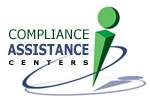Historical Articles
March, 1952 issue of Plating
Question Box
Readers’ questions of general interest
Q. 137. What is a good gold solution for plating radar wave guides, from 0.5 x 1 x 36 inches long to 2 x 4 x 132) inches long? The guides are first silver plated to a thickness of about 0.0003 inch and should then be flashed with a light-colored gold of good depth.
A. I assume that the problem of uniform deposition of the silver has been solved by the use of inside anodes and pumping of the solution through the tube. The use of such equipment should make it rather easy to apply the gold.
A minimum of 0.000003 inch of 24K gold must normally be applied on a highly finished silver surface in order that a gold color remains after initial diffusion has taken place; thinner coatings result in a brown, stained surface. As the silver finish becomes matter, a thicker coating is required.
We recommend for a 0.000003-0.00001 inch coating a solution containing 5 dwt/gal (2 g/l) gold as KAu(CN)2 and 2 oz/gal (15 g/l) of each free potassium cyanide, potassium phosphate and potassium carbonate, operated at 150-160°F and 10-15 asf with 18-8 stainless-steel or platinum anodes. - E. A. PARKER.
Q. 138. How can I prevent the formation of ferrocyanides from steel ball-anode containers in a low-pH bronze solution? Would rubber coating of the greater part of container help?
A. The real source of your difficulty is probably the presence of chlorides from dragged-in muriatic acid pickling solution or chlorinated solvent. Improvement in the rinsing prior to plating is indicated. The use of partly rubber-coated steel containers is likely to cause the corroding current to concentrate on the bare areas. In some work with completely rubber coated containers, contact was established to the top ball above the solution level. Very high contact pressure and frequent adjustment to maintain contact throughout the stack of balls appeared necessary. - K. G.SODERBERG.
 |
 |
 |
 |
 |
| Home | Subscribe | Regulations | Compliance Assistance | News | Resources | Resource Locators | Directories | Online Training | About | Search | NASF.org |
The information contained in this site is provided for your review and convenience. It
is not intended to provide legal advice with respect to any federal, state, or local regulation.
You should consult with legal counsel and appropriate authorities before interpreting any
regulations or undertaking any specific course of action.
Please note that many of the regulatory discussions on STERC refer to federal
regulations. In many cases, states or local governments have promulgated relevant rules and
standards
that are different and/or more stringent than the federal regulations. Therefore, to assure full
compliance, you should investigate and comply with all applicable federal, state and local
regulations.

